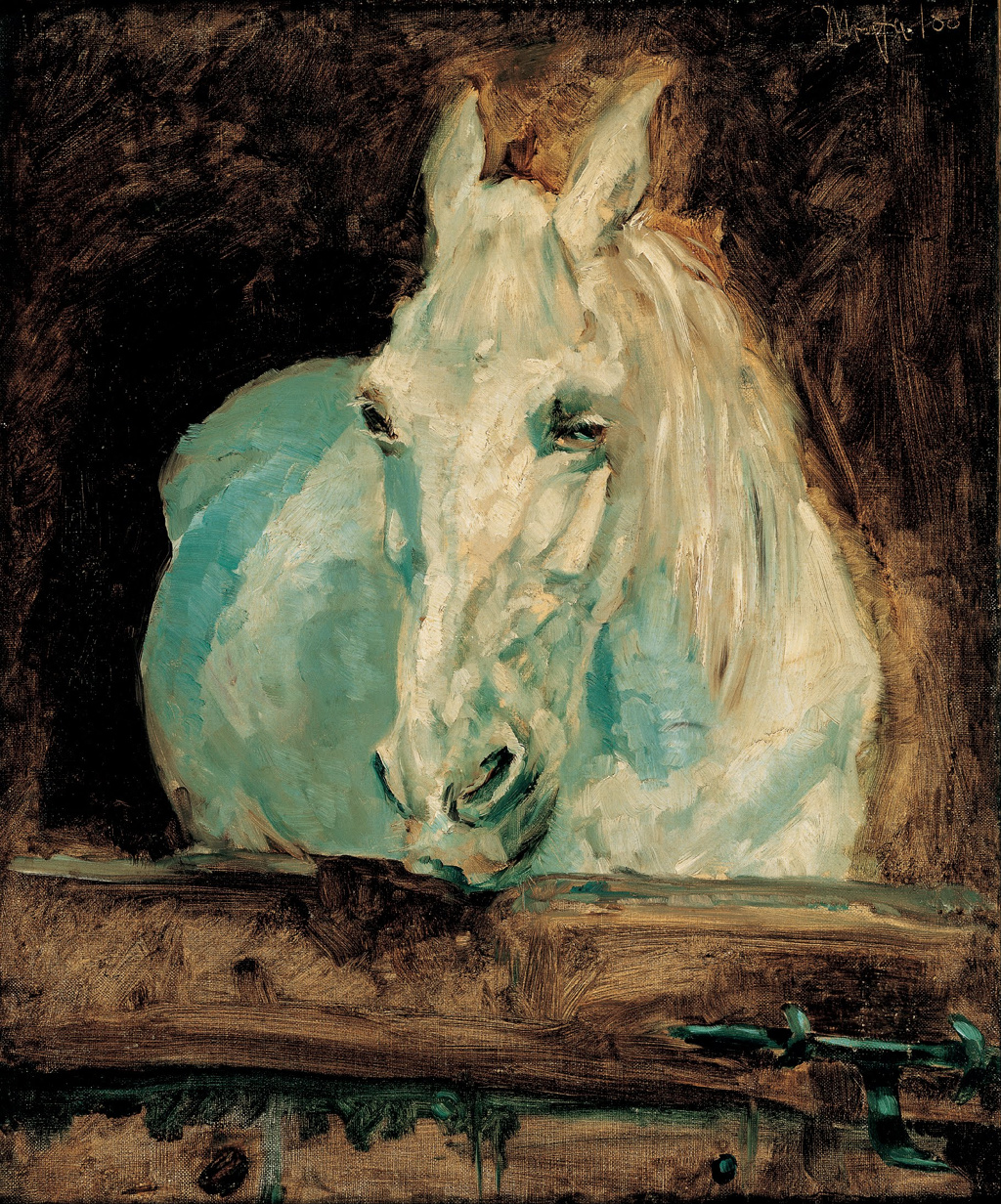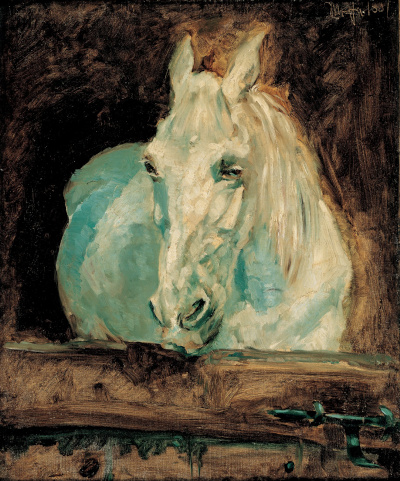White Horse Gazelle was completed by French painter, Henri de Toulouse-Lautrec, in 1881. The painting is now a part of the permanent collection of the Albertina Museum in Vienna, Austria.
This simple composition features a white horse leaning out from its stable. A door cuts across in front, with its room darknened by the artist. Toulouse-Lautrec creates a glow around the horse which produces a magical contrast between the light and dark tones of this painting. The horse looks in our approximate direction and is seen length ways, with its back just arching round. It must surely have been difficult for the artist to arrange this portrait, such is the unpredictable nature of dealing with animals. Horses have been one of the most pictured types of animals, serving a mixture of roles over the past few centuries in western life, both in battle, as pets, and also in sporting competitions. Their elegant frames have made them a popular choice for artists, and can be found in drawings, paintings and also many sculptures.
This portrait of a horse compares markedly with the bright and lively scenes of Paris, for which the artist is most well known. This work is calm and relaxing, offering a glimpse of the animal world but without any of the danger. The horse itself may have been amusing itself by gnawing away at the door in front, and is clearly interested in the arrival and attention afforded to it by the artist. Its body language suggests a healthy and contented horse who is friendly and confident. Toulouse-Lautrec would have come across horses as a child, with his family being wealthy and able to own several on their own land. He would actually produce several portraits of animals in his younger years, but less so once the nightlife of Paris had taken his interest.
It is not known as to what role the horse played at that time, it might have been for carriage work, or alternatively might have been for racing. Horses served several important roles within French society at that time and so were seen much more often than they are today, even within the city. It is unfortunate to see such pure content within his paintings at this stage of his career, knowing that in later life the difficulties that he suffered would lead to alcoholism and ultimately his premature death. Thankfully, he worked prolifically and so left behind a huge body of work which continues to be enjoyed today by those who understand the important contribution that he made to French art.





